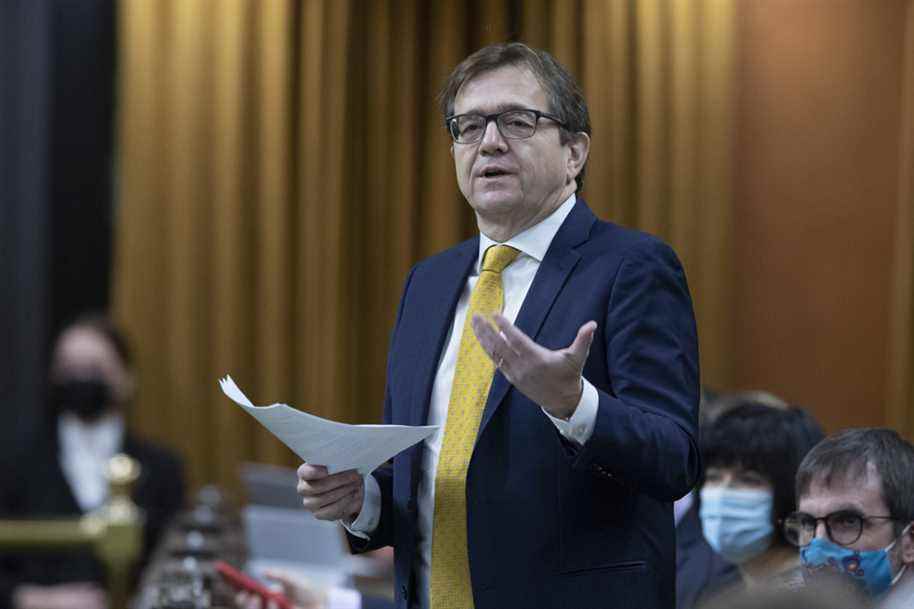(Ottawa) Federal Natural Resources Minister Jonathan Wilkinson is reassessing a subsidy program for businesses to reduce their methane emissions – a program the environment commissioner called ill-conceived last fall.
The third phase of requests for the $ 675 million Coastal and Offshore Program from the Emissions Reduction Fund was originally scheduled to end on Friday. But that round has been put on hold as the department tries to address some of the concerns raised by the environment commissioner, who was basically talking about a waste of public funds.
The relaunch is tentatively scheduled for the third week of January, with applications due before March. Minister Wilkinson promises the changes will adjust program requirements to make things more transparent, achieve better results and set limits on the cost of projects per tonne of emissions they reduce.
The program provides loans of up to $ 50 million to oil and gas producers to help them meet or exceed federal regulations that mandate reductions in their methane emissions.
The first two rounds of this program paid $ 134 million to 81 projects led by 26 companies in the oil and gas sector.
During an audit of the first wave of subsidies, Environment Commissioner Jerry DeMarco called the program unnecessary and ineffective. The Commissioner of the Environment, who works on behalf of the Auditor General, concluded that the allegations on the emissions actually reduced were too summary. In addition, there is nothing to prove, according to him, that projects to reduce methane emissions could not have gone ahead without these public funds.
Environment Commissioner Jerry DeMarco also argued that the program was failing to ensure that companies did not use the new funds to finance projects they were already planning. Thus constituted, the program would not allow further reductions in emissions and would not offer the expected return based on the amounts invested.
Mr DeMarco added that several companies had included in their applications a statement that the loan funds would allow them to reduce their methane emissions to such an extent that they could increase their production while meeting the targets set by the new regulations on methane.
But, he noted, any increase in emissions resulting from increased oil or gas production would not count in calculating the number of emissions that would be reduced with the funds.
Mr. DeMarco said the program needs to be “vastly improved”.
Methane, a much more potent global warming agent than carbon dioxide when left in the atmosphere, is essential in slowing climate change.
It accounts for 13% of Canada’s total emissions and 40% of oil and gas sector emissions, primarily due to ventilation and methane flaring at oil and gas production sites.
Ventilation is a controlled release of leftover unburned gas from the oil and gas production process. Flaring is a controlled combustion of waste gases, often visible by a large flame atop a flare at a production site.
Minister Wilkinson intends to change the eligibility criteria so that these funds are only allocated to projects that completely eliminate methane emissions or its flaring, and which allow companies to go to- beyond what is required by the new federal methane regulations.
The new criteria will also require projects to go beyond existing regulations, which provide for a 40% reduction in methane emissions from the oil and gas sector by 2025, from 2012 levels.
Canada is on the right track to achieve this, according to a report released last month. The country also began work on the next goal of a 75% reduction from 2012 levels by 2030. In the fall, Canada joined the global commitment to reduce all 30% methane emissions from 2020 levels by 2030.
Besides oil and gas, agriculture and landfills are the main sources of methane in Canada.
